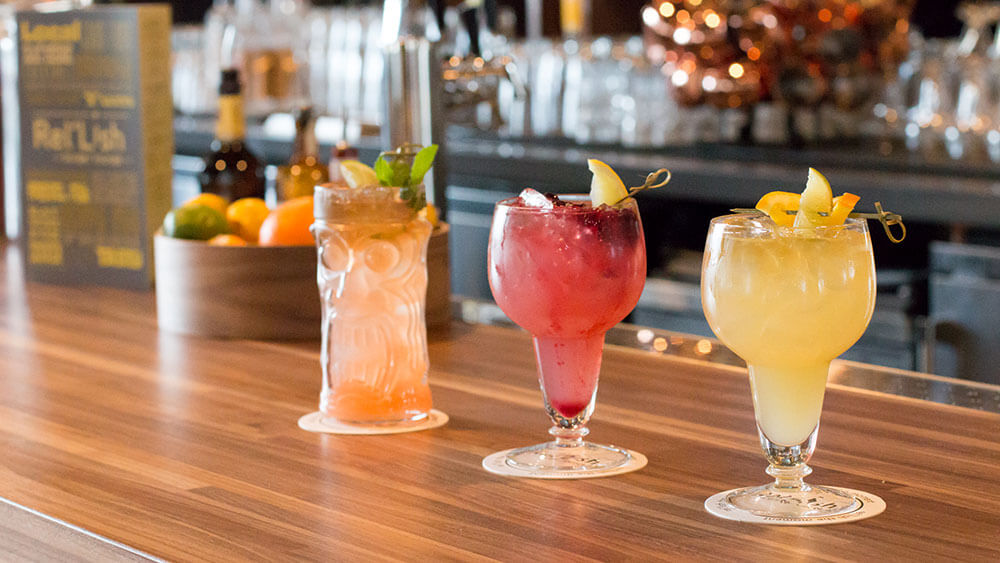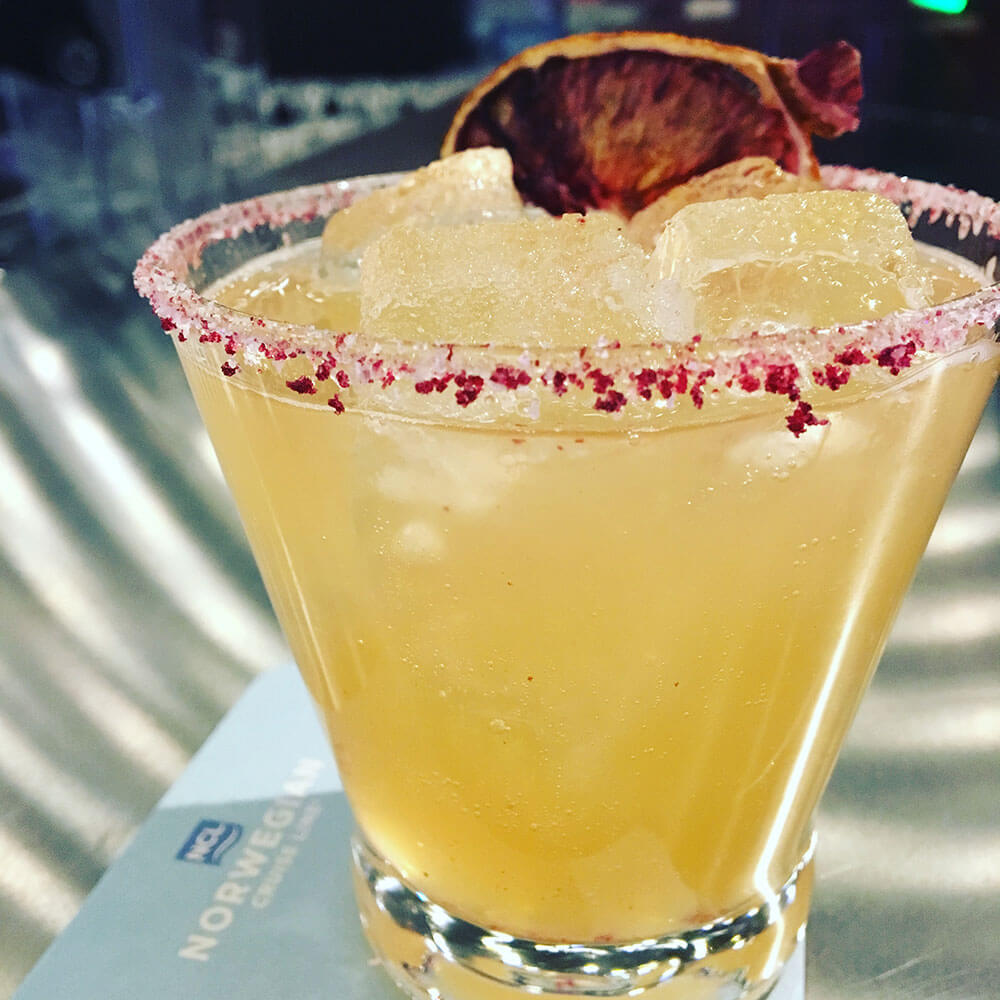
Rel’Lish Burger Lounge’s cocktails-on-tap include Wiki Rum Punch (from left), Northwest Berries & Bubbles, and First Class Margarita. (Liquid Kitchen)
Set up a few bars at your next reception or meal event and have some wait staff walk around offering drinks from trays — sounds like a good go-to plan, right? Wrong, said chef, mixologist, and entrepreneur Kathy Casey.

Kathy Casey said creating signature cocktails and offering fewer other options will make beverage service much easier. (Courtesy Liquid Kitchen)
A pioneer in the bar-chef movement, Seattle-based Casey owns Kathy Casey Food Studios & Liquid Kitchen, a global food, beverage, and concept development and innovation agency whose clients include Norwegian Cruise Lines, Fairmont Hotels & Resorts, Ritz Carlton, Mandarin Oriental Hotels, Marriott International, and Holland America Line among others.
Casey shared with Convene three beverage trends that will help event strategists slake attendees’ thirst more efficiently and provide a better overall experience.
Need for Speed
Why is the bar line “a million miles long” at so many events? Casey said that she wishes organizers would “put more into their bar setups for special events,” namely to set them “up for speed.”
In addition to making sure there are enough bars to handle the number of people attending, one easy fix is to split up the bars according to drink offerings, she suggested, with separate bars serving cocktails, wines, and maybe beer.
Less is Best
Another way to speed up service is to limit the number of drink choices at the event. “I don’t think you need to have everything for everybody,” Casey said. “I think it’s great to have one or two signature cocktails, wine, Champagne, and maybe beer. And boom, you’re done.”
Not only does the line move faster when there are fewer drinks options, the plan reduces the amount of labor and storage needed.
This approach requires that the event organizer have a good sense of his or her audience. “Ask who your group is,” she said, and what kinds of drinks express that. “The trick is to focus on just a few things and do them really well.”
Try to choose different flavor profiles for your cocktails, she said, so there is something for everyone’s tastes. You also can pre-batch parts of the drinks to speed things up — but she cautioned against pre-making full drinks.
Cocktails on Tap
When it comes to beverage service at events, nothing seems to bother Casey more than a diluted cocktail — the result of both long bar lines and poor planning. “I cannot stand the pre-made drinks passed around on a tray. They’re getting warm and diluting, and they’re just circulating, circulating,” Casey said. “That is a very bad idea.”
Dispensing cocktails from a keg — using technology originally developed for beer and wine — can solve the problem. The trend of cocktails on tap has been around for a while — Esquire magazine suggested 2013 was “the year of the kegged cocktail.” The magazine might have oversold the idea, but the buzz has returned as the keg technology has improved.
More from Kathy Casey: How to Create Instagrammable Cocktails for Your Event
Kegs now self-agitate, Casey said, which lessens the chance that heavier ingredients like some fruit juices will settle at the bottom.
With cocktails on tap, groups can create a signature drink that bartenders can serve quickly because it can be pre-batched and kegged — up to a few weeks in advance.
Beyond speed, the biggest benefit of cocktails on tap, according to Casey, is a consistent pour. “No matter who’s serving it, it’s always perfect,” she said. “They’re handcrafted but also fast. What you’d put in a cocktail you just put in the keg.”
Top It Off
As simple as that seems, you have more work to do. To really make your cocktails on tap impress attendees, you need to add a fresh finish to the pour. Casey suggested a float of wine on top of each drink, or some citrus zest or other garnish to add a bit of wow to the drink.
That’s what Casey’s team does at her Rel’Lish Burger Lounge at Seattle-Tacoma International Airport. The lounge’s “Northwest Berries & Bubbles” cocktail, featuring Oregon’s Crater Lake vodka and fresh lemon elixir, “gets finished with a splash of [Chateau Ste. Michelle] sparkling wine and some fresh berries,” she said. “They look great.”
Curt Wagner is a Convene associate editor.

The Smoked Peach Margarita contains 1800 Reposado Tequila, Gracias a Dios Mezcal, Triple Sec, peach puree, fresh lime, organic agave nectar, and a hibiscus salt rim. Kathy Casey developed the drink for Norwegian Cruise Lines’ cocktails-on-tap program. (Courtesy Liquid Kitchen)
